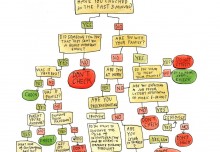“Why waste time proving over and over how great you are, when you could be getting better? Why hide deficiencies instead of overcoming them? And why seek out the tried and true, instead of experiences that will stretch you? The passion for stretching yourself and sticking to it, even (or especially) when it’s not going well, is the hallmark of the growth mindset. This is the mindset that allows people to thrive during some of the most challenging times in their lives.”
– Carol Dweck
This fall, I presented a webinar for students and alumni at the NYU Stern School of Business called Bouncing Back about resilience. In today’s VUCA (volatile, uncertain, complex and ambiguous) workplace, it’s an increasingly important muscle to flex and strengthen.
Like many executive coaches, I often work with individuals who find themselves at inflection points in their careers. Sometimes, the call to action that leads them to seek coaching is a positive development that presents new challenges, like a bigger job, being tapped as high potential or starting a business. Other times, my clients are grappling with the sort of adverse experiences – job loss, a toxic boss, being passed over for a promotion, or just plain feeling stuck and unfulfilled – that can cause even the hardiest among us to lose our mojo.
Given the inevitable setbacks, disappointment, rejections and failures we’re all bound to encounter over the course of our increasingly unpredictable, non-linear careers, how can we learn to not just survive – but thrive – after adversity strikes? How do we condition ourselves to metabolize the stress in our lives more effectively and bounce back with renewed determination when bad things happen to us?
While our hard-wired response to adversity, trauma and failure is normally distributed across the population on a bell curve, starting out in the shallow end of the resilience pool doesn’t mean you have to stay there. There’s mounting evidence that it is, in fact, possible to boost our mental toughness quotient. Here are the strategies I shared in my webinar for building emotional resilience and cultivating a growth mindset:
- ACKNOWLEDGE YOUR FEELINGS
It’s normal to feel sad, angry, frustrated or embarrassed when things go wrong. After a significant trauma or failure, we might even feel that our positive beliefs about the future have been shattered. This, too, is normal. If you’re going through a difficult time, check in frequently with yourself and confide in people you trust about the specific emotions you’re experiencing. That makes it easier to know what kind of resources you need, and how others can help you.
- CHOOSE YOUR RESPONSE
It’s important to remember that the emotional consequences of an event are determined not by the adversity itself, but from our beliefs about what happened and what is in our arsenal of possible responses. Do you see a setback as a learning opportunity that will help you nail it the next time around, or as “confirmation” that you just don’t have what it takes? Resilient people are able to overcome pain and disappointment by perceiving bad times as a temporary state of affairs, and they draw on the memory of prior adverse experiences where they ultimately prevailed to help them do so. If you’re struggling to find an empowering silver lining story to tell yourself in a tough situation, ask yourself how you’d offer encouragement to a friend in those same circumstances, or your child.
- TAKE AWAY THE RIGHT LESSONS
Sometimes life isn’t fair. Something bad happens that is beyond our control, and there isn’t much in the way of learning to extract. Most of the time, though, there are some valuable nuggets of discovery that we can take from a setback or failure. Once you get over the immediate sting of disappointment, ask yourself what you’ll do differently to achieve a better outcome next time. What additional experiences or tools do you need to acquire? What red flags might you have ignored that you’ll now be on the lookout for?
- INVEST IN YOUR WELL BEING
Whether or not you’re in the throes of a challenging situation, taking care of yourself is a critical ingredient in your ability to cope with stress. Dr. Dan Siegel, a psychiatrist and neuroscientist who teaches at UCLA Medical School and is also the founder of the Mindsight Institute, is a leading expert on brain plasticity. Check out his Healthy Mind Platter, which he created to highlight seven daily activities that have been shown to promote positive change and rewiring in the brain.
- CULTIVATE OPTIMISM AND GRATITUDE
Dr. Martin Seligman, a leading expert on happiness and resiliency, has been researching these topics for more than 30 years. In his view, the one quality that all resilient people share is optimism. Seligman says, “People who don’t give up have a habit of interpreting setbacks as temporary, local and changeable.” If you’re a more pessimistic person by nature, start making a concerted effort to take stock of the good things that are already in your glass. Here’s a great blog post by Eric Barker on how to be happier that emphasizes the role gratitude and optimism play in that quest.
- NURTURE YOUR RELATIONSHIPS
It’s difficult to bounce back from adversity if we aren’t actively tending to important connections in our lives—connections to other people, to our ideals and values, to causes, to role models who inspire us. Serving as a source of strength and support for others is also critical. Stay in touch with your friends. If you have kids, make sure you’re carving out meaningful time with them. Volunteer. Tutor. Visit patients at a hospital or nursing home. Get involved in someone’s life whose problems help you put your own in perspective. The positive emotional dividends that come from doing nice things for others often far surpass your investment.
I’d love to hear what happens if you experiment with some of the strategies in this ACTION framework. If you think I’ve left out anything important that has worked for you, please let me know that, too. I’ll end with this spot featuring Misty Copeland, a soloist with the American Ballet Theater, whose success offers an inspiring example of what’s possible to achieve when we dream big and don’t let rejection deter us.









